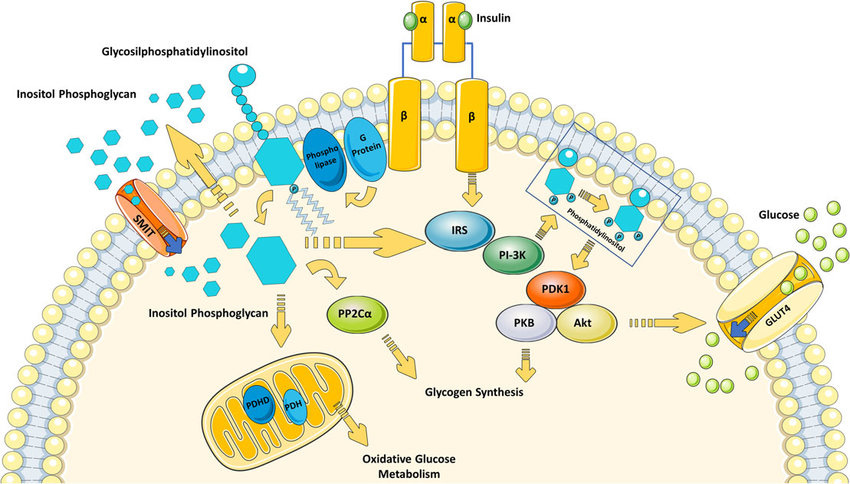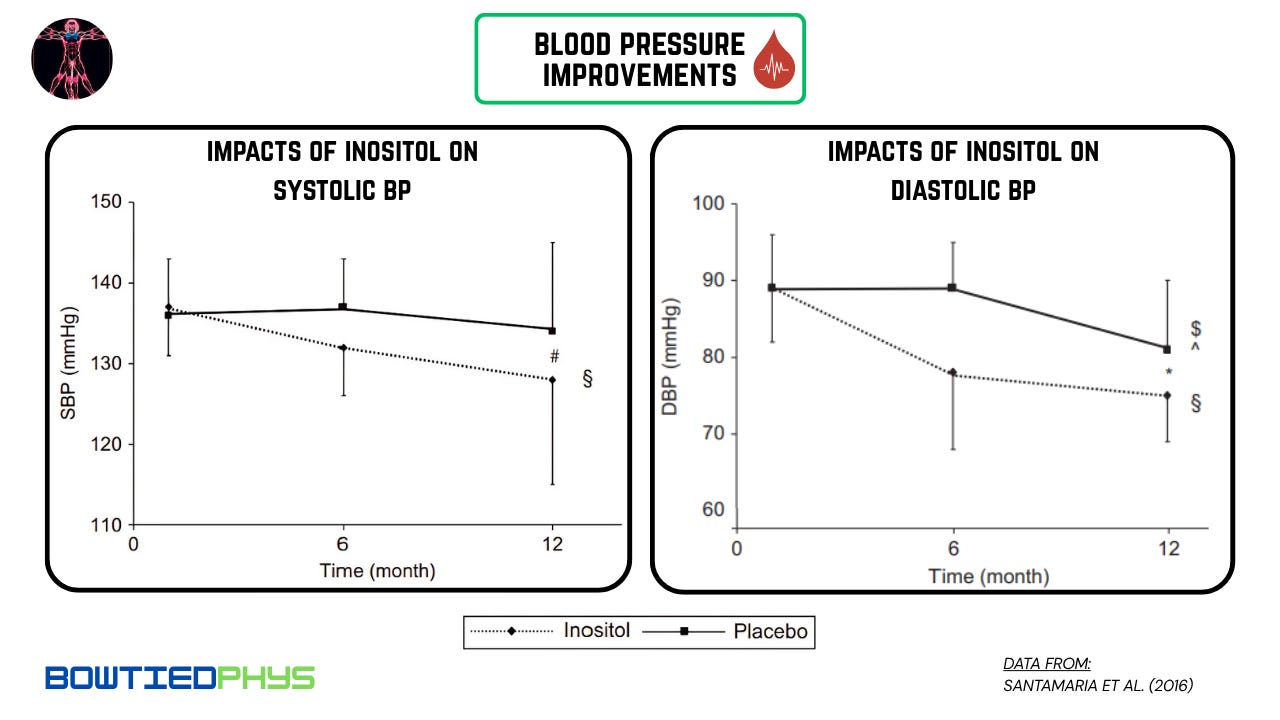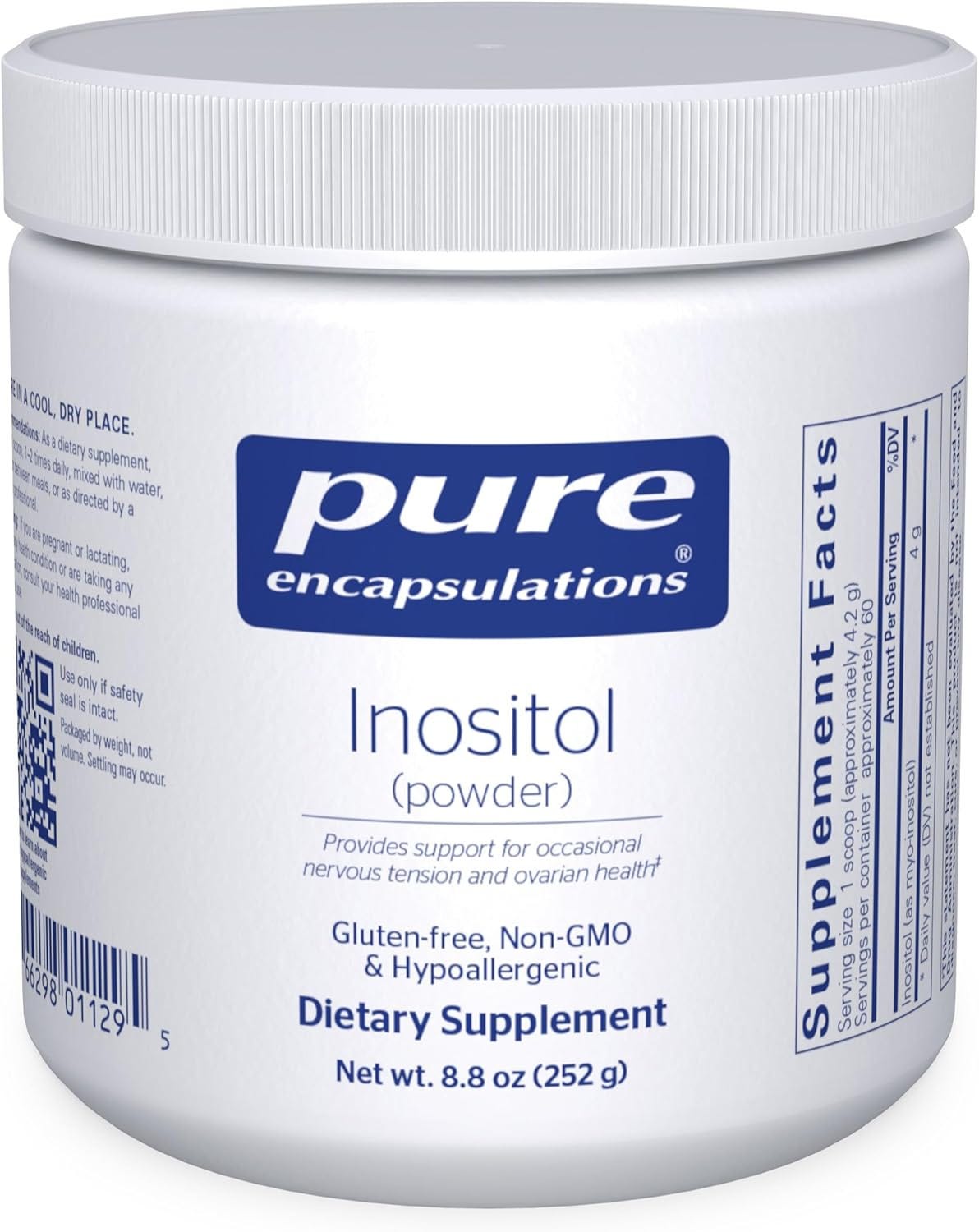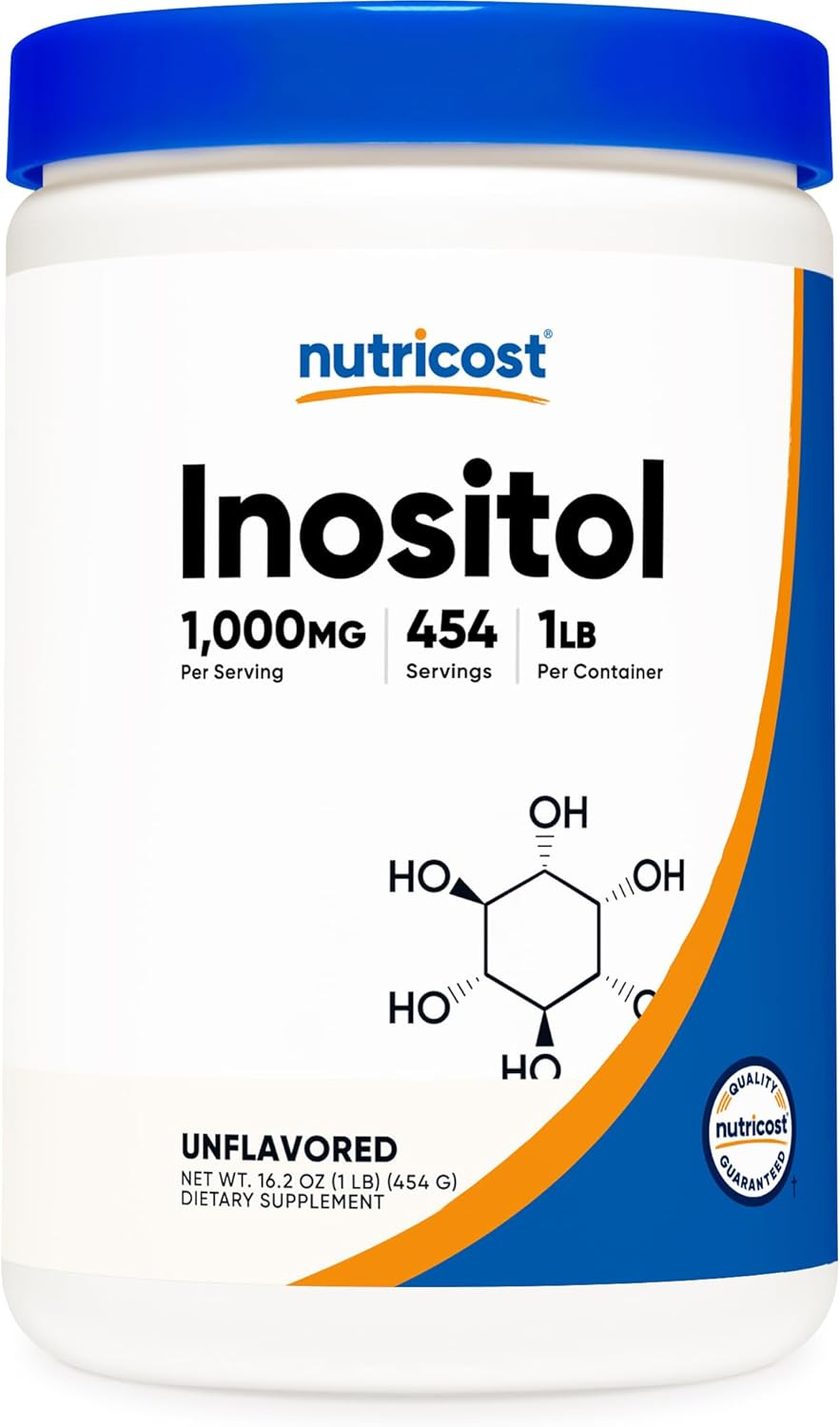How One Supplement Is Quietly Treating Metabolic Disease, Anxiety, & Infertility
Supplement Spotlight #9
To all my Substack friends - we’re back with another one.
A compound I only started taking seriously a year ago as I researched therapies capable of supporting my brother’s T-ALL cancer recovery. Getting into the depths of the papers, I stumbled upon inositol hexaphosphate (IP6) as one of the more compelling anticancer compounds and an adjunct tool to conventional chemotherapy. What I discovered was this had far more than anticancer potential.
At that time a year ago I was focused on developing a comprehensive protocol and bookmarked a lot of the tangential research for a later date. Now is that date so it’s finally time to get into all that inositol can do for you & I.
What we’re covering this week:
What is Inositol?
How it Works
Benefits (as seen through the latest research)
Protocols
Reputable Brands
What is Inositol?
Sometimes referred to (erroneously) as Vitamin B8, inositol isn’t actually a vitamin. It’s a cyclic carbohydrate we produce endogenously (~2 g/day) in the kidneys to support cell signaling.
Inositol exists in nine different forms, but we’re only focused on the three pertaining to human function: myo-inositol (MI), D-chiro-inositol (DCI), & scyllo-inositol (SI). Our brain tissue concentrates myo-inositol at levels 10-15x higher than the blood, while D-chiro-inositol accumulates in insulin-sensitive tissues (i.e. liver & muscle).

Structurally, inositol forms the backbone of phospholipids keeping cell membranes together, helping proteins attach to membranes & creating a ready supply of materials for rapid cellular responses. Functionally, it acts as a master communicator generating second messenger molecules to control essential cell processes: insulin signaling, calcium movement within cells, maintaining electrical charge across membranes, & breaking down fats.
Mechanisms of Action
Insulin Sensitization via Phosphatidylinositol Signaling
The underlying mechanism driving many of the practical benefits we’ll see is inositol’s ability to sensitize the insulin signaling pathway.
Let’s break it down simply. When insulin binds to its receptor, it needs to create internal signals telling the cell to take up this glucose, store it as glycogen, or use it for energy/convert to ATP now. Inositol phosphoglycans (IPGs) serve as the messengers internal to the cell, but they can only be made when adequate inositol is available inside the cell.
Now for a more complete breakdown on the graphic (skip if you’re not interested in the nerdy depths of the cell mechanisms): When insulin binds to its receptor (yellow structures in top center), it also activates the typical glucose pathway (right side) where insulin receptor signaling proteins trigger different pathways to move GLUT4 transporters to the cell surface for glucose uptake. The IPG pathway (left side) where membrane-bound glycosylphosphatidylinositol then gets cleaved to produce IPGs. The IPGs get tossed out of the cell → reimported via SMIT transporters → activate PP2Cα to stimulate glycogen synthesis & activate mitochondrial enzymes (like PDH complex in mitochondria) → finally we get glucose oxidation.
Neurotransmitter Regulation
In a 2019 edition of Schizophrenia Bulletin, Chiappeli et al. noted an important relationship between inositol levels in the brain & depression:
“Myo-inositol levels were lower in individuals with a history of depression compared to controls in 4 regions of the frontal and parietal cortex…myo-inositol levels were inversely correlated with trait depression (frequency of symptoms experienced over course of life) in 19 regions”
So what’s going on here?
The abridged version: we need inositol for many brain-related functions related to every critical system (serotonergic, dopaminergic, GABAergic, cholinergic), as well as for boosting synaptic plasticity & neuroprotection. And without an adequate supply, our neurotransmitters fail to signal properly.
If there’s one area we’re going to see a lot more promise for inositol as an exogenously administered compound - it’s the compelling ability to effectively treat brain-related disorders.
Health Benefits
Almost all positive impacts of inositol supplementation we see are a result of improvements in metabolic health. A good place for us to begin.
Metabolic Health
First, we need to look at how inositol impacts the foundational pillars of metabolic health generally.
A 12-month clinical trial by Santamaria et al. recruited 80 postmenopausal women with metabolic syndrome. All women were randomly divided into two equal groups of 40 women each: one group received 2 grams of myo-inositol 2x daily, while the other received a placebo. Relative to placebo, the myo-inositol group demonstrated significant improvements across multiple metabolic biomarkers:
Insulin resistance (HOMA-IR)
Lipids (HDL-C & triglycerides)

Blood pressure (systolic & diastolic)
A more targeted meta-analysis by Tari et al. concurred with these findings showing the impact of inositol supplementation on blood pressure markers: reductions in systolic & diastolic by 5.7 mmHg & 7.1 mmHg, respectively. The strongest benefits were observed when taken for more than 8 weeks at 4,000 mg daily.
Minozzi et al. similarly found lipid improvements with a 40:1 ratio myo-inositol & D-chiro-inositol combination therapy: HDL-C increased by 45%, LDL-C reduced by 14%, & triglycerides reduced by 24%.
Anxiety/Panic Attacks
One of the more promising, yet lesser well-known use cases for inositol.
In this double-blind crossover trial from Palatnik et al., 20 patients with panic disorder received both treatments in random order: 1 month of myo-inositol (up to 18 grams daily) & 1 month of fluvoxamine (up to 150 mg daily), a standard SSRI.
Myo-inositol demonstrated a notable advantage in reducing panic attack frequency - decreasing episodes by ~4 attacks/week compared to the SSRI’s reduction of only 2.4 attacks/week. Patients also experienced significantly fewer side effects with myo-inositol avoiding the nausea and fatigue commonly associated with fluvoxamine.
OCD
A double-blind crossover study conducted by Fux et al. in 1996 involving 13 patients with obsessive-compulsive disorder administered 18 grams of inositol daily over a 6-week period. Subjects showed significantly greater improvement in their OCD symptoms during the inositol treatment phase compared to when they received the placebo.
The authors also candidly described the power (threat) of inositol:
“This is the third controlled, double-blind trial of inositol to show positive results in the spectrum of affective and anxiety disorders that respond to antidepressants…The compound is inexpensive and not patentable, so scientific development faces considerable problems.”
Depression
A 1995 clinical trial by Levine et al. found 12 g/day of inositol to be more effective than the placebo in reducing depressive symptoms.
Levine further noted the success of a novel treatment pathway for mood disorders:
The present study is, to our knowledge, the first use of the precursor strategy for a second messenger rather than a neurotransmitter in treating depression…An important observation in the present study was the absence of manic episodes in the bipolar depressed patients treated with inositol.
Another trial conducted in 2011 by Carlomagno et al. similarly described inositol’s positive effects on addressing premenstrual dysphoric disorder (PMDD). They showed significant reductions in depressive symptoms using two different forms of myo-inositol.
Polycystic Ovary Syndrome (PCOS)
When metabolic health improves - reproductive health improves. We now see the compelling impacts of inositol on insulin sensitization so it shouldn’t be surprising it also demonstrates such robust effects in the reproductive health space.
A 2023 meta-analysis across 26 RCTs & 1,691 patients showed that women treated with inositol had a 79% higher likelihood of menstrual cycle normalization compared to placebo.
Now let’s narrow in on a couple of the most well-conducted trials in this space.
In 2016, Benelli et al. ran a 6-month randomized, placebo-controlled trial across 46 young overweight women impacted by PCOS. The patients in the treatment group receiving 1,100 mg myo-inositol (MI) & 28 mg D-chiro-inositol (DCI) daily demonstrated significant improvements in:
Metabolic biomarkers related to insulin sensitivity
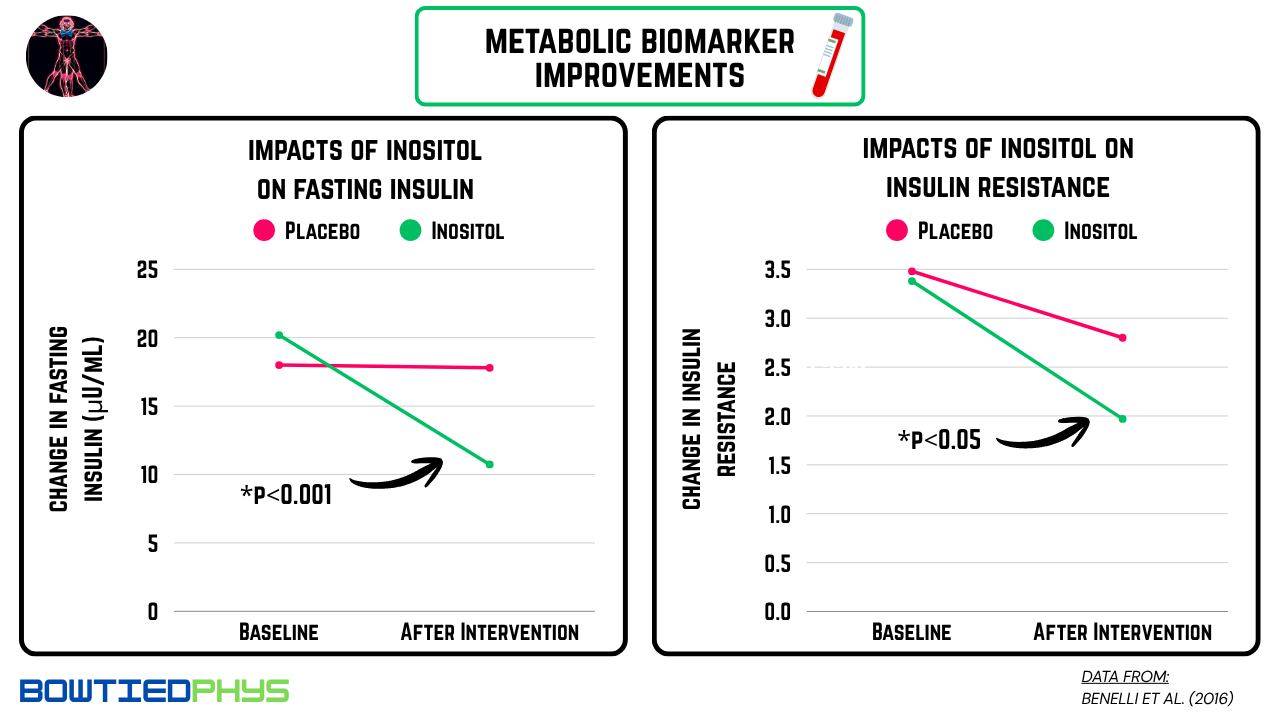
Endocrine biomarkers related to hyperandrogenism & abnormal ovulation periods
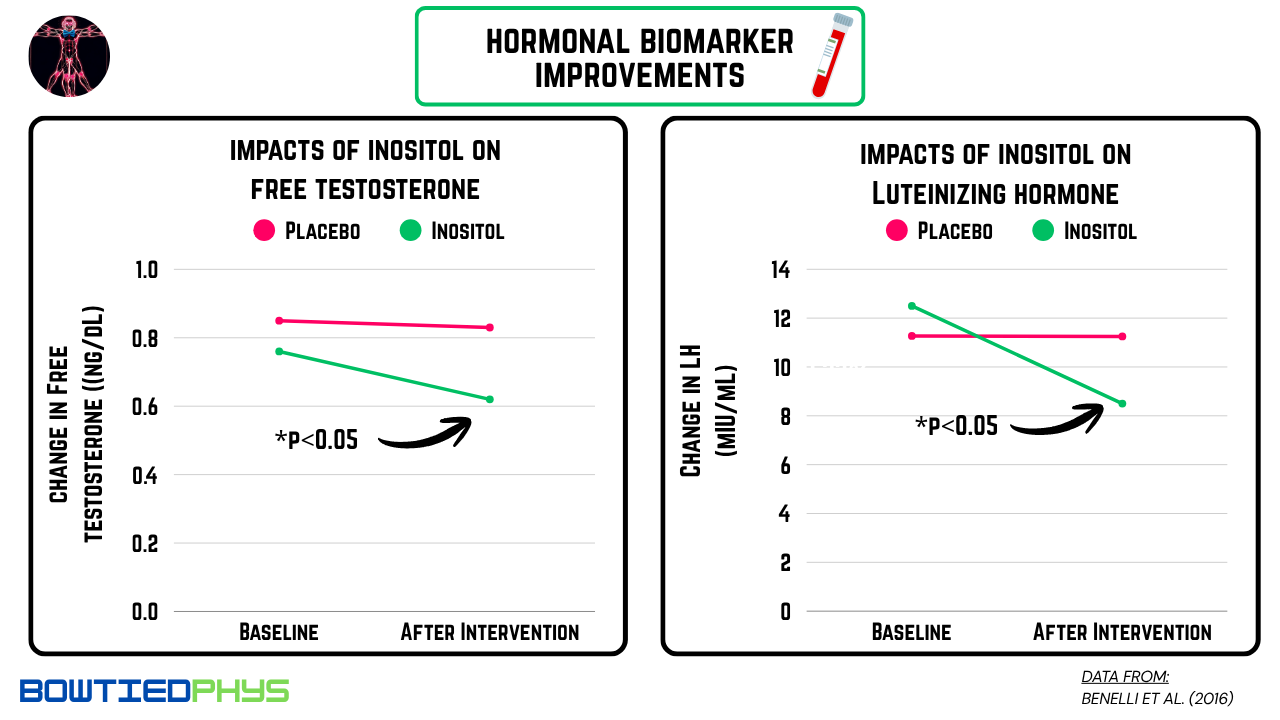
Another robust set of evidence for PCOS comes via Angik et al.’s results published in 2015. 100 patients were split into two groups for a 6-month period: 1) 2,000 mg myo-inositol/day & 2) 1,000 g metformin/day. The authors concluded:
“the administration of myo-inositol improves insulin sensitivity…metformin is effective in reducing the metabolic and hormonal parameters and also improves fertility but myo-inositol not only improves all the above parameters but also decreases insulin resistance”
Not only does inositol give metformin a run for its money, but in many of these trials it demonstrates a superior efficacy with a reduced side effect profile.

Acne
Though the primary outcome measured in this trial conducted by Zacche et al. wasn’t the control of acne, the subjects saw significant improvements in this area over the trial period. At 3 months, acne had completely resolved in 21% of patients, remained moderate in 58%, & was still severe in 21%. By 6 months, the improvement was even more pronounced - 53% of patients showing complete clearance, 34% having moderate acne, & only 13% still experiencing severe acne.
Notice a trend? When metabolic health improves…you get it by now.
Fertility
In 2021, Mohammadi et al. demonstrated a 4 g daily inositol dose for 12 weeks increased pregnancy rates, reduced the risk of ovarian hyperstimulation, and improved oocyte & embryo quality in IVF patients.
Also worth nothing in this same trial - six patients achieved spontaneous pregnancy during the pretreatment period showcasing inositol's potential to restore natural fertility without expensive IVF procedures.
Chiu et al. similarly showed the association of serum myo-inositol & boosting fertility. Higher levels of myo-inositol within the fluid surrounding developing eggs are closely linked with optimal follicle development, enhanced estradiol hormone synthesis, & other indicators of high-quality ovulation processes.
Gestational Diabetes
By the third trimester of pregnancy, insulin sensitivity becomes significantly impaired, dropping to ~50-70% below pre-pregnancy levels. In a 2024 meta-analysis conducted across four RCTs & 327 patients, Chen et al. demonstrated myo-inositol’s ability to reduce the need for insulin therapy by 76%.
Insulin resistance markers also showed great improvement with large effect sizes.
Protocols
The following protocols were developed based on a combination of user feedback, personal research, & clinical *human* trials.
Sleep
Myo-Inositol Dosage: 3 - 5 g/day
Synergistic Compounds:
Magnesium Glycinate → 800 mg
L-Theanine → 1,000 mg
Glycine → 3 g
Timing: 30 min prior to sleep
Anxiety
Myo-Inositol Dosage: 12 - 18 g/day (incrementally increase until tolerable to gut)
Synergistic Compounds:
Magnesium Acetyl Taurinate→ 800 - 1,600 mg
L-Theanine → 600 - 1,000 mg
Taurine → 2 - 3 g
Rhodiola Rosea → 500 - 1,000 mg
Timing: Split across 2-3 doses/day
Insulin Sensitivity
Myo-Inositol Dosage: 2 - 4 g/day
Synergistic Compounds:
Berberine Phytosome → 1,000 - 1,500 mg
Taurine → 1,000 - 2,000 mg
Timing: Prior to highest calorie/carb-dense meal
Fertility Support
Myo-Inositol Dosage: 2 - 4 g/day
Synergistic Compounds:
**To enhance fertility conditions, prioritize a micronutrient-dense, high protein diet rich in folate, vitamins A, C, D & E, iodine, selenium & zinc before any supplementation**
L-methylfolate → 500 mcg via Methylated B-Complex
CoQ10 → 400 - 600 mg
N-Acetyl L-Cysteine → 500 - 1,000 mg
Timing: Prior to any meal in single dosage
PCOS Management
Myo-Inositol Dosage: 2 - 4 g/day
Synergistic Compounds:
Berberine Phytosome → 1,000 - 1,500 mg
Acetyl L-Carnitine → 2 - 3 g
DHA & EPA (Omega-3s)→ 2- 3 g
L-methylfolate → 500 mcg via Methylated B-Complex
Timing: Prior to highest calorie/carb-dense meal
Reputable Sources
“What about sourcing from food?”
We can get small amounts from diet alone. However, any clinically valuable amounts range from 2 - 18 g daily - ~5 - 50x more than we can source from nutrition. Therefore we turn to myo-inositol in supplement form.
Some brands I trust:
**NOW Foods Inositol Powder** (Phys Value Pick)
Cost/1 g: $0.06
*Pure Encapsulations Inositol Powder* (Phys Quality Pick)
Cost/1 g: $0.20
Cost/1 g: $0.06
More sauce you won’t get anywhere else. At depths few are willing to go.
If you haven’t already, reminder to subscribe below. Every little bit makes an impact in the fight against the rampant growth of the reductionist AI/mainstream slop we're seeing. (We’re going to win.) And it’s why we’re running the Anti-Slop Summer Sale™ before we roll out more premium content.
Stay after it & until next time.
Your friend,
Phys
***Disclaimer: The information provided by BowTiedPhys is for educational purposes only. This content is not intended to be a substitute for professional medical advice, diagnosis, or treatment of any kind. BowTiedPhys is not a licensed medical provider. Prior to making any changes to your health protocols, consult a licensed healthcare professional. Some of the links in this post may be affiliate links - BowTiedPhys may earn a commission at no additional cost to you. This commission helps support our work and allows us to continue providing valuable content to our valued subscription members.***





